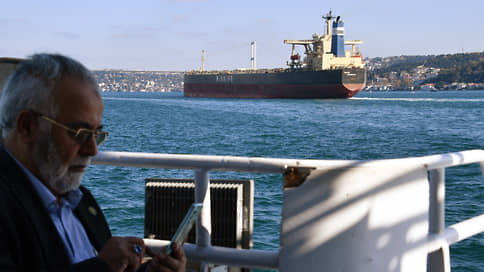Bread from the Russian Federation was wrapped in money for Ukraine
[ad_1]

The G7 countries will not restrict food supplies from Russia, so as not to increase the imbalance in the world market, this is stated in a statement by the finance ministers of the G7 member countries. This should allow the Russian Federation to export to the world market up to 50 million tons of wheat – a quarter of the annual world trade in it. The increase in supply, in turn, will lower prices, frozen at record highs, and feed the least economically developed countries, who now bear the double burden of becoming expensive on the world market and reducing the purchasing power of their own currencies. RF freedom of trade will bring up to $15 billion in export earnings. To balance this, the communique of the G7 finance ministries lists packages of assistance from developed countries to the Ukrainian economy – $ 32 billion in 2023 after comparable amounts already allocated in 2022.
The global upheaval caused by Russia’s military operation in Ukraine is disproportionately affecting low- and middle-income countries, according to a document prepared following yesterday’s meeting of G7 finance ministers. With this in mind, the G7 countries agreed not to target sanctions on Russian food and not to impede the “free flow of agricultural products.”
According to experts, the record harvest of 2022 (150 million tons) allows the Russian Federation to export about 50 million tons of wheat by the end of the agricultural year (July 1), which is more than a quarter of its world trade (194 million tons). At the same time, analysts expect some reduction in grain prices from the current levels of $315 per ton (see Kommersant of December 7), which, in turn, may spur demand from poor economies. For the Russian Federation, the proceeds from the supply of only wheat to the world market can amount to about $15 billion, or about 1 trillion rubles, of which the Ministry of Agriculture will withdraw about 150-180 billion rubles. through the mechanism of floating export duty – the ministry previously promised to use these funds for state support of farmers, but so far the amount of fees significantly exceeds the volume of distribution. At the same time, a number of market participants have repeatedly asked the ministry to remove duties, as they support inefficient producers at the expense of efficient ones, but the head of the department, Dmitry Patrushev, refused (the last time was on December 8). In conditions when the costs of the agro-industrial complex for seeds and agricultural machinery have increased significantly, the sector is losing profitability and indicates a possible reduction in crops.
For the rest of the world, the G7 “permit” to export Russian grain is part of a “package” that also includes the Black Sea Grain Initiative (the ability to export Ukrainian grain through Russian-controlled Black Sea ports). The “package” is part of the UN recommendations to overcome the food crisis in the world. According to a recent study by UNCTAD (United Nations Conference on Trade and Development), in contrast to previous food crises (2007-2008, 2010-2012), now countries lagging behind in terms of socio-economic development are facing a “double burden”: prices for imported food is growing, and the exchange rates of the national currencies of the poorest countries against the US dollar are falling (from May 2021 to October 2022 – by an average of 24%). As an illustration of the vulnerable position of developing countries, the report cites the situation with wheat imports: since 2020, its prices have increased by an average of 89%, and the US dollar against their currencies by 10-46%, which dispersed the rise in food prices for them to 106 -176%.
Probably, in order to “balance” the non-imposition of sanctions on Russian food exports in the communique of the G7 finance ministers, the G7 countries again promised to provide Ukraine with support for as long as it takes. In total, since the beginning of the military operation, the G7 has allocated $32.7 billion to Ukraine, which has either already reached the recipient or is in the process of distribution – they were directed to support the government of the country. In addition, an additional $6.7 billion was allocated by the European Bank for Reconstruction and Development, the International Finance Corporation (part of the World Bank Group) and the European Investment Bank. Next year, the G7 is ready to allocate another $32 billion to Ukraine, including €18 billion from the EU countries, and a large aid package from the United States (it has yet to be approved in the country’s Congress). Canada, on the other hand, sends Ukraine customs payments from imports of Russian and Belarusian goods. The finance ministers also promised, if necessary, to increase support and create a coordination platform for donor countries and organizations, which will deal with the issues of restoring the economy of Ukraine.
The approved volumes of assistance, however, are not comparable with the estimates of the Ukrainian government in terms of the amount of funds needed to restore the infrastructure – earlier, for these purposes, it was proposed to use, among other things, the frozen reserves of the Russian Federation in the amount of about $ 300 billion (this possibility was studied, in particular, in the European Commission), however, the G7 statement does not mention such a measure (at least not yet).
[ad_2]
Source link






